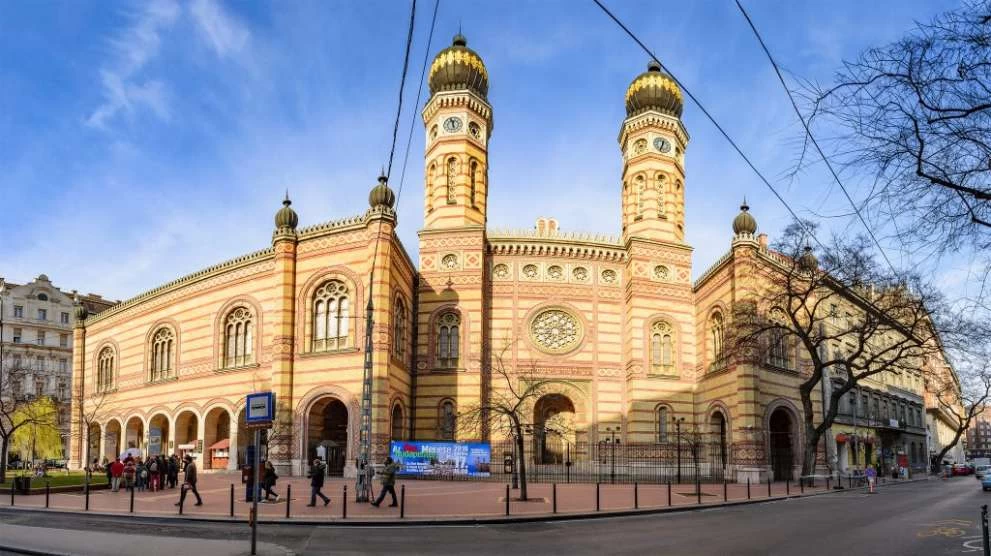The Great Synagogue, also known as the Dohány Street Synagogue or Tabakgasse Synagogue, is a historical landmark situated in Erzsébetváros, Budapest's 7th district. It is the largest synagogue in Europe and has the capacity to seat 3,000 people, serving as a hub of Neolog Judaism.
Constructed between 1854 and 1859 in the Moorish Revival style, the synagogue's decoration draws heavily on Islamic influences from North Africa and medieval Spain, such as the Alhambra. Ludwig Förster, the synagogue's Viennese architect, believed that no single Jewish architectural style existed, and thus opted for "architectural forms that have been used by oriental ethnic groups that are related to the Israelite people, and in particular the Arabs." Frigyes Feszl was responsible for the interior design.
The Dohány Street Synagogue complex comprises the Great Synagogue, the Heroes' Temple, the graveyard, the Memorial, and the Jewish Museum, which was built on the site where Theodor Herzl was born. Dohány Street, a tree-lined street in the city's heart, is closely associated with the Holocaust, as it served as the boundary of the Budapest Ghetto.
